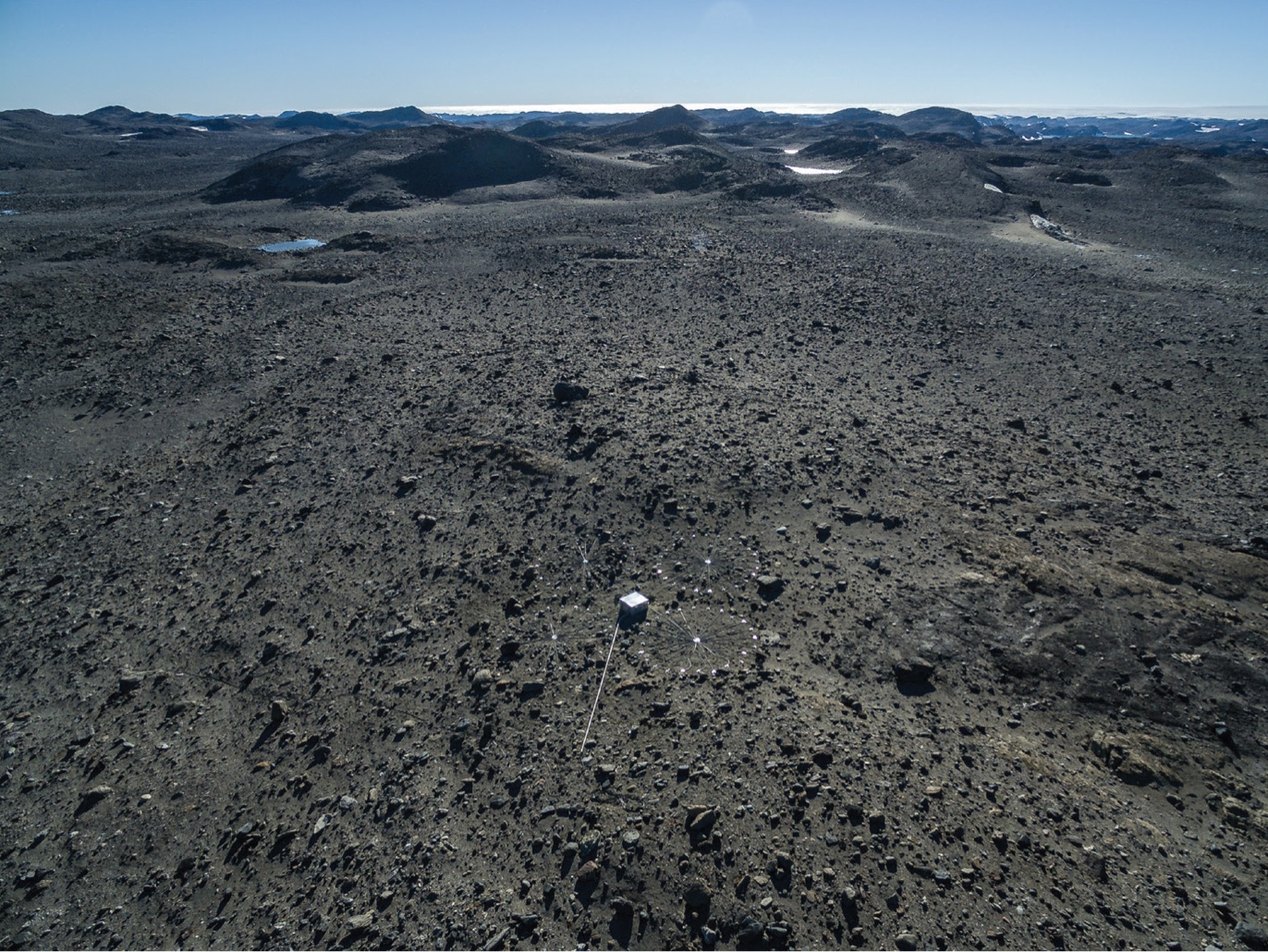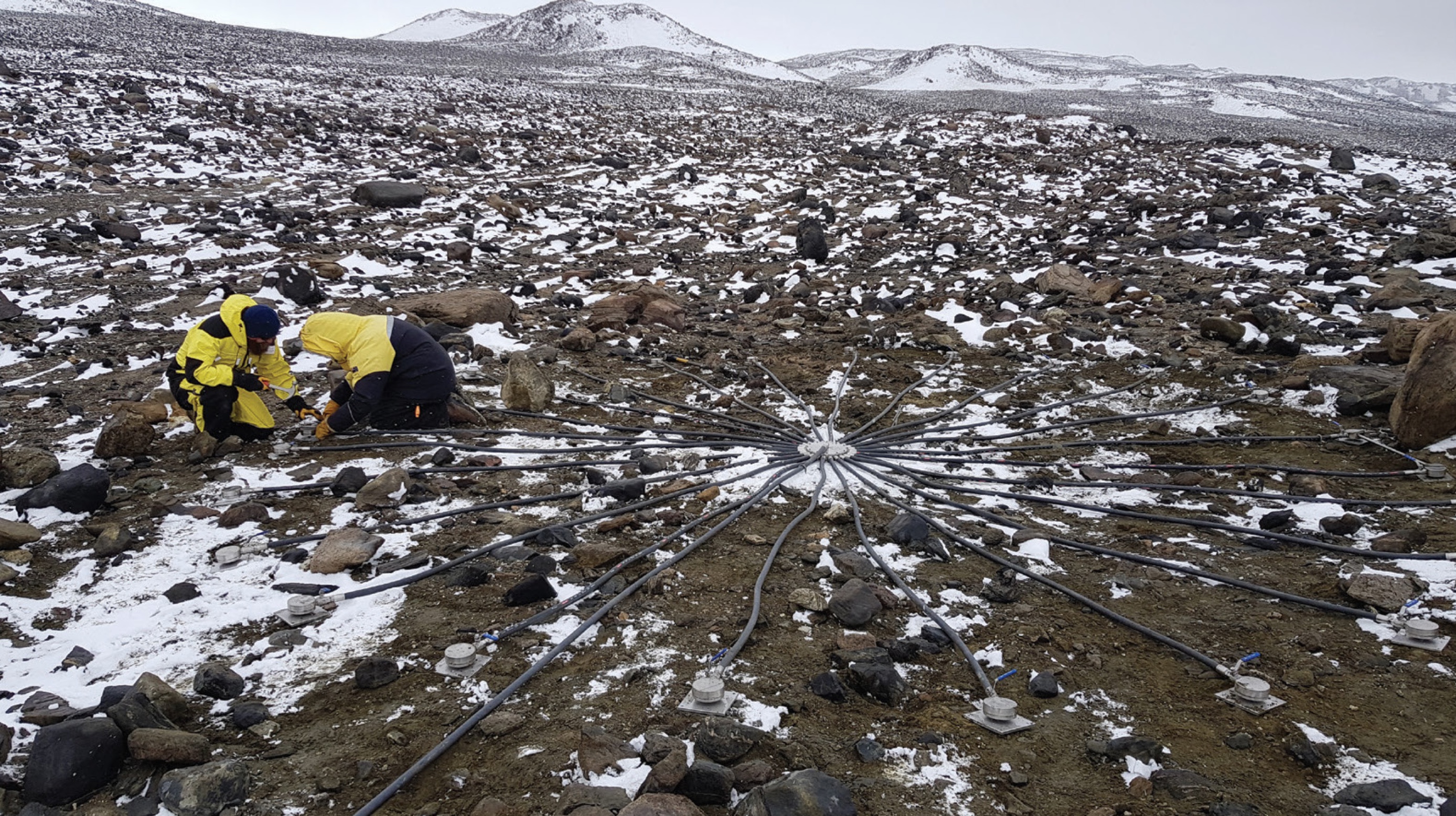Output 1.6: CTBT Implementation
Development of verification systems and arrangements in support of Australia's commitments related to the Comprehensive Nuclear-Test-Ban Treaty.
Performance Measures
- Australia's obligations under the Comprehensive Nuclear-Test-Ban Treaty (CTBT) are met.
- Legal and administrative mechanisms which support Australia's commitments related to the CTBT are effective.
- Contribute to the development of CTBT verification, including through the work of the CTBT Organization (CTBTO) Preparatory Commission.
- Contribute to Australia's CTBT outreach efforts.
Performance Assessment
International Obligations
Of the 21 facilities that Australia will host for the CTBT International Monitoring System (IMS), all are in place and certified as operating to CTBTO technical specifications.
Work on the final facility to be established, an infrasound monitoring station at Davis Station, Australian Antarctic Territory, was completed in early 2018. Testing to certify that the station meets CTBT requirements, was completed in August 2018. With Geoscience Australia, ASNO arranged an event to mark that milestone as part of a visit to Australia by the CTBTO's Executive Secretary.
The uninterrupted operation of Australia's IMS stations is a routine focus for ASNO. During the year, ASNO has continued to work with the CTBTO and Western Australian Government agencies to reduce the risk of accidental damage to the seabed cable that brings to shore data from the Cape Leeuwin hydrophone array and to facilitate routine maintenance of the cable. ASNO is working also with ARPANSA and the Australian Antarctic Division to ensure that the redevelopment of facilities on Macquarie Island has minimal impact on the operation of the IMS radionuclide monitoring facility on the island.

Minister for Foreign Affairs and Minister for Women, Marise Payne at the 9th Ministerial Meeting of the friends of the CTBT, September 2018. Photo courtesy of The Official CTBTO Photostream
Nuclear-Test-Ban Verification
ASNO administers funding for Geoscience Australia to carry out nuclear test monitoring through its network of seismic stations as well as those of the CTBT's IMS. This arrangement, set out in a Letter of Understanding between Geoscience Australia and ASNO that is reviewed each year. ASNO is satisfied that Geoscience Australia has met its requirements under the Letter of Understanding during the reporting period.
Although the CTBT is not yet in force, its IMS is now substantially in place, with around 90 per cent of treaty-designated stations in operation. The system detects and reports on many thousands of events each year. Almost all of these can be clearly identified as natural in origin and in the twenty-first century only the DPRK appears to have conducted nuclear test explosions. The table below details nuclear tests conducted by the DPRK. During the reporting period, Geoscience Australia has reported to ASNO on the detection of a number of small seismic events in the vicinity of the DPRK test site at P'unggye-ri. These appear to be a continuing series of aftershocks following the large September 2017 test explosion.
The operation of a National Data Centre (NDC) to verify an in-force CTBT will require additional activities. ASNO, ARPANSA and Geoscience Australia, together with the Department of Defence, continue to hold the question of Australia's future NDC requirements under review.
| DATE | APPROXIMATE SEISMIC MAGNITUDE | ESTIMATED EXPLOSIVE YIELD (kT) | COMMENT |
|---|---|---|---|
| 9 October 2006 | mb 3.9 | < 1 | Likely partial failure |
| 25 May 2009 | mb 4.56 | 1 – 5 | Seismic detection consistent with a simple fission device |
| 12 February 2013 | mb 4.93 | 3 – 13 | Seismic detection consistent with a simple fission device |
| 6 January 2016 | mb 4.83 | 2.5 – 10 | Claimed by DPRK to be test of a "hydrogen bomb". Seismic detection consistent with a simple fission device. |
| 9 September 2016 | mb 5.06 | 4.4 – 19 | Seismic detection consistent with a simple fission device |
| 3 September 2017 | mb 6.05 | 150–240 | Seismic detection consistent with a more advanced weapon design – potentially thermonuclear as claimed by DPRK |
Australian Participation in CTBTO verification development activities
The CTBTO Preparatory Commission, including its member states, continues to carry out work to ensure the treaty's verification regime will be ready to meet requirements in the CTBT when the treaty enters into force. ASNO coordinates and contributes to Australia's specialist support for this work, which is focused mainly on meetings of the CTBTO's Working Group B. Experts from Geoscience Australia and ARPANSA contribute mainly in relation to ongoing development of the CTBT's IMS and International Data Centre.
When the CTBT enters into force, it will provide for on-site inspections (OSI) to determine whether a nuclear explosion has taken place in a particular area. ASNO's Malcolm Coxhead, as Task Leader for the elaboration of an Operational Manual on the conduct of OSI, continued to chair discussions on this subject at the CTBTO Preparatory Commission's technical working group. During the year, Coxhead has worked with the CTBTO also on planning for a series of OSI build-up exercises in late 2019 and 2020.
From 4–7 December 2018, Australia hosted the Seventh Workshop on Signatures of Man-Made Isotope Production in Sydney (WOSMIP). The event was coordinated by the Australia Nuclear Science and Technology Organisation. Around one hundred international and Australian experts discussed ways to mitigate the impact on nuclear explosion monitoring of radioxenon released from civil activities, even where such releases are well below regulatory limits.
During the reporting period, five Australian experts participated in international workshops in support of CTBT verification and two Australians participated in CTBTO training activities in relation to their function as operators of IMS stations. ANSTO's Alison Flynn is participating in regular events as part of a three-year program to train future specialists to conduct OSI under the CTBT. ASNO coordinates the involvement of Australians in this training. While around 90 per cent of CTBT IMS stations are now in place worldwide, detailed preparatory work is continuing to bring the IMS and International Data Centre to a good level of readiness. ASNO coordinates Australia's contribution to the CTBTO's work in this area, working with technical specialists from Geoscience Australia and ARPANSA.

Australia's 21st and final International Monitoring System Station, the Davis Infrasound Array in the Australian Antarctic Territory. Photo courtesy of the Official CTBTO Photostream

One of the four detectors at the Davis Infrasound Array, Australian Antarctic Territory. Photo courtesy of the Official CTBTO photostream
Outreach
A fundamental requirement for an effective CTBT will be the ability of States Parties to form sound technical judgements about the nature of events detected by the IMS. Australia continues to work with and alongside the CTBTO to promote relevant technical capacity in the National Data Centres of signatory states.
In November 2018, ARPANSA, DFAT worked with the CTBTO to host a workshop on the CTBT for states of the South Pacific.

